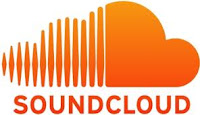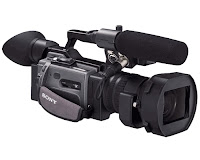How did you use new media technologies in the construction , research, planning and evaluation stages. ?
In order for our group to create a successful media product a number of new media technologies had to be used to construct a successful documentary also this was the case in the research planning and evaluation stages. The new media technologies ranged from software like final cut pro to hit tech filming equipment like the Sony pd60 high definition camera.
 In constructing a successful media product, research and planning is crucial in putting together the right elements of a documentary. Whilst in the stages of research and planning it was important to incorporate new technologies in order to have optimum research data and in the planning stages new technologies helped structure group roles, responsibilities and in general what work needed to be completed. We made a group blog on the popular blog site www.blogger.com in order to upload and keep all of the research together. Also it helped us to plan as a group what needed to be done and when, we uploaded weekly updates so people could keep track of what stage our production was at.
In constructing a successful media product, research and planning is crucial in putting together the right elements of a documentary. Whilst in the stages of research and planning it was important to incorporate new technologies in order to have optimum research data and in the planning stages new technologies helped structure group roles, responsibilities and in general what work needed to be completed. We made a group blog on the popular blog site www.blogger.com in order to upload and keep all of the research together. Also it helped us to plan as a group what needed to be done and when, we uploaded weekly updates so people could keep track of what stage our production was at.  In the early research process, we needed a way collate all of the ideas for our documentary. Creating a digital mind map was one of the first ways we incorporated new media technologies into our research and planning. The software can be found on www.bubbl.us, through this site I created a brainstorm with all of the ideas and plans e.g possible interviewees, cutaways, codes, conventions & voiceover etc. The use of this new technology allowed the brainstorm to be accessible to anyone and also was fully interactive which is more efficient then older methods of brainstorming.
In the early research process, we needed a way collate all of the ideas for our documentary. Creating a digital mind map was one of the first ways we incorporated new media technologies into our research and planning. The software can be found on www.bubbl.us, through this site I created a brainstorm with all of the ideas and plans e.g possible interviewees, cutaways, codes, conventions & voiceover etc. The use of this new technology allowed the brainstorm to be accessible to anyone and also was fully interactive which is more efficient then older methods of brainstorming.  In the process of production of our main and ancillary task certain audio file needed to be uploaded to the web. We used sound cloud, an online software which enable user to upload audio files in sound cloud format. This was important for me to use new the media technologies of sound cloud as without It I would have been unable to create my radio trailer and also upload the sound for our documentary to the blog for the audience to see. This software is found on www.soundcloud.com.
In the process of production of our main and ancillary task certain audio file needed to be uploaded to the web. We used sound cloud, an online software which enable user to upload audio files in sound cloud format. This was important for me to use new the media technologies of sound cloud as without It I would have been unable to create my radio trailer and also upload the sound for our documentary to the blog for the audience to see. This software is found on www.soundcloud.com. In the main production we used various new media technologies in order to create it. Filming equipment allowed us to capture the footage and sound of the interviews and cutaways. In filming the footage we used the high tech Sony pd170 high def camera. We used this video camera to film all of the footage of our documentary. The footage was captured on a DV tape which was then subsequently uploaded onto the editing timeline. This was also used in the evaluation stage as the audience feedback of our finished product was filmed on the pd170. This technology allowed us to capture footage easily and efficiently whilst filming outside its lightweight and small frame made filming practical.
In the main production we used various new media technologies in order to create it. Filming equipment allowed us to capture the footage and sound of the interviews and cutaways. In filming the footage we used the high tech Sony pd170 high def camera. We used this video camera to film all of the footage of our documentary. The footage was captured on a DV tape which was then subsequently uploaded onto the editing timeline. This was also used in the evaluation stage as the audience feedback of our finished product was filmed on the pd170. This technology allowed us to capture footage easily and efficiently whilst filming outside its lightweight and small frame made filming practical.  Another key part of the filming equipment was the use of the clip on microphone. The microphone found on the pd170 was not able to pick up the voice of the interviews in clear and efficient manner so we used the clip on tie to capture the high quality sound form the interviews. This equipment connected to the pd170 and without the use of the clip on microphone we would be penalised heavily as the quality of sound would be significantly reduced.
Another key part of the filming equipment was the use of the clip on microphone. The microphone found on the pd170 was not able to pick up the voice of the interviews in clear and efficient manner so we used the clip on tie to capture the high quality sound form the interviews. This equipment connected to the pd170 and without the use of the clip on microphone we would be penalised heavily as the quality of sound would be significantly reduced. Once all of the footage was filmed the tape was then handed to the editor, who would edit the footage. To get maximum marks for our production it was essential that a high quality editing software was used. This is were the final cut pro software was used in the construction process. This software allowed the editor to edit the footage with the use of advanced tools found on final cut to create a high quality edited documentary.
We then used you tube to upload the finished product. You tube is an online site that allows users to upload videos which can be accessible users around the globe. This allowed our media product through the use of new technologies to be able to be accessed by our target audience.
In creating my ancillary tasks I used new media technologies ii the form of photo shot. This software allowed me to edit my photo to create a newspaper advertisement that was clear to the audience. Certain tools like crop, contrast etc allowed me to incorporate new technologies to produce a successful newspaper advertisement.



